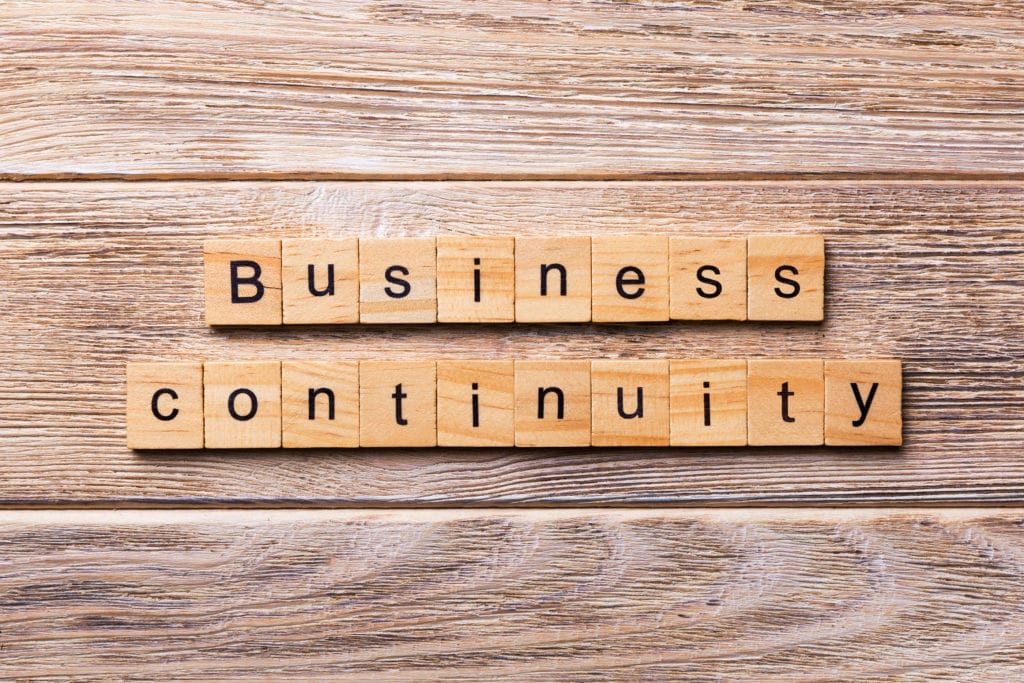
Every business needs to have a business continuity and disaster recovery plan in place, or else risk losing everything in the event of an unexpected crisis.
Whether a storm takes out power and the internet for days or a ransomware attack cripples your business for weeks, having a plan in place gives you a much better chance at recovering and keeping losses to a minimum.
Ransomware attacks cause an average of 16.2 days of downtime for businesses.
Unfortunately, many small and medium-sized businesses in the Chicago area and around the country don’t have a business continuity and disaster recovery plan in place.
Some statistics from FEMA show the importance of having a backup plan you can follow in the event of a work-stopping event. These include:
- 40% of businesses never reopen after a disaster
- 25% of businesses that do reopen after a disaster, fail within a year
- A key difference between surviving and closing is disaster recovery planning
What keeps businesses from putting together a business continuity and disaster recovery plan?
Often, they don’t know where to begin or just keep putting it off until “later.” But disasters can strike at any time, as the world found out most recently with the coronavirus pandemic.
Steps for Creating a Business Continuity & Disaster Recovery Plan
While it can seem like a daunting task to create a business continuity and disaster recovery plan for your Chicago business, it may be the one thing that saves you in the event of an unforeseen crisis.
We’ve broken the process down below into comprehensive steps to get you started on the right path.
Step 1: List Potential Disaster Scenarios & Impacts
You’ll first want to make a list of the types of events that could cause an interruption in your business operations. Think of everything you can, both large and small, that might cause your company to close, either for a few hours or several days.
For each event, you’ll want to give it a priority level. For example, a break-in and theft will have a different priority than your building being wiped out by a fire.
Some of the potential disaster scenarios to consider are:
- Natural disaster
- Man Made disaster
- Data breach/cyber attack
- Ransomware attack
- Data loss from equipment damage or loss
- Cloud service outage
- Pandemic related events
- Power outage
- Insider attack on your network
- Break-in and theft
Step 2: Identify the Protections Needed to Keep Operations Going
Next, for each scenario, you’ll want to identify the protections you need to recover as quickly as possible and keep operations going. These will be both proactive protections and reactive.
For example, to protect against a ransomware attack or another type of data loss incident, you’ll want to have safeguards in place such as an anti-malware program and firewall, as well as a reliable backup and recovery solution.
To protect yourself in case you need to operate remotely, you would need to have cloud solutions in place to facilitate remote workers.
You’ll be identifying things like:
- Software needed
- Alternate plans for operations (like everyone working remotely)
- Proactive protections against an incident
- Plans you need to recovery quickly (like help from an IT partner)
Step 3: Review Your Current Systems & Do a Gap Analysis
Now that you know what needs to be in place to help you both prevent an incident and recover quickly from one if it does occur, you need to see where your current systems are lacking.
A gap analysis compares what’s needed to what you currently have. For example, if you use a landline phone right now, but found that you need the ability to answer your phone lines from anywhere, a VoIP system would fall into that gap and be something you needed to put into place.
Step 4: Create Your Plan and Budget
For this step, the prioritization you did in Step One is going to come in handy. Most businesses will have to roll out their purchases for their business continuity plan over several months, so knowing which disaster planning to prioritize gives you a roadmap.
You’ll want to create detailed guides and step-by-step protocols to follow for each type of disaster scenario. For example, you may put in place a notification phone tree in the event that something makes it impossible for employees to work at the office.
Put your plans and the needed assets into place, with the highest impact priorities first.
Step 5: Test Your Plan Regularly
It’s important to run disaster recovery drills regularly. These drills serve two key purposes:
- They get your staff familiar with the steps to take in case a disaster occurs, so your business can get back up and running quickly; and
- They give you a way to test your recovery strategies to see if there are any kinks or areas that need to be refined.
Get Help With a Solid Business Continuity & Disaster Recovery Plan
ProdigyTeks has several disaster recovery solutions that can help your business be ready for anything. You don’t have to go it alone when it comes to continuity planning and recovery. We have your back every step of the way.
Schedule a free phone consultation today! Call 312-600-8357 or reach us online.



Leave a Reply